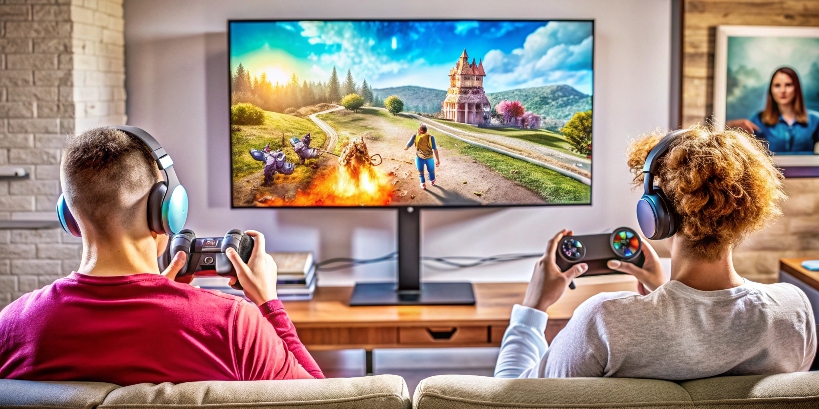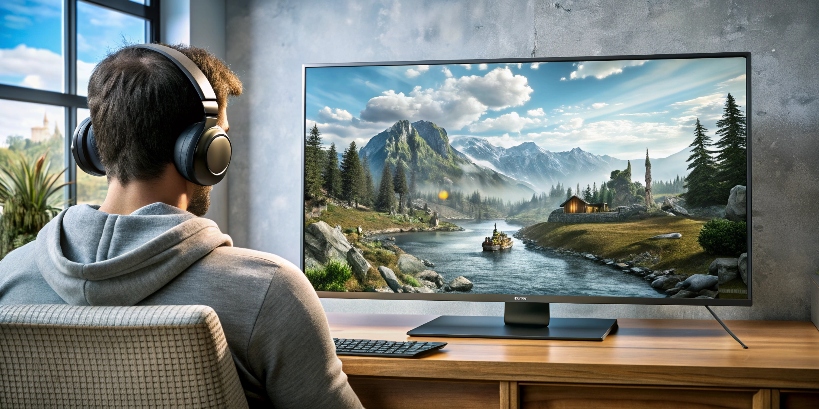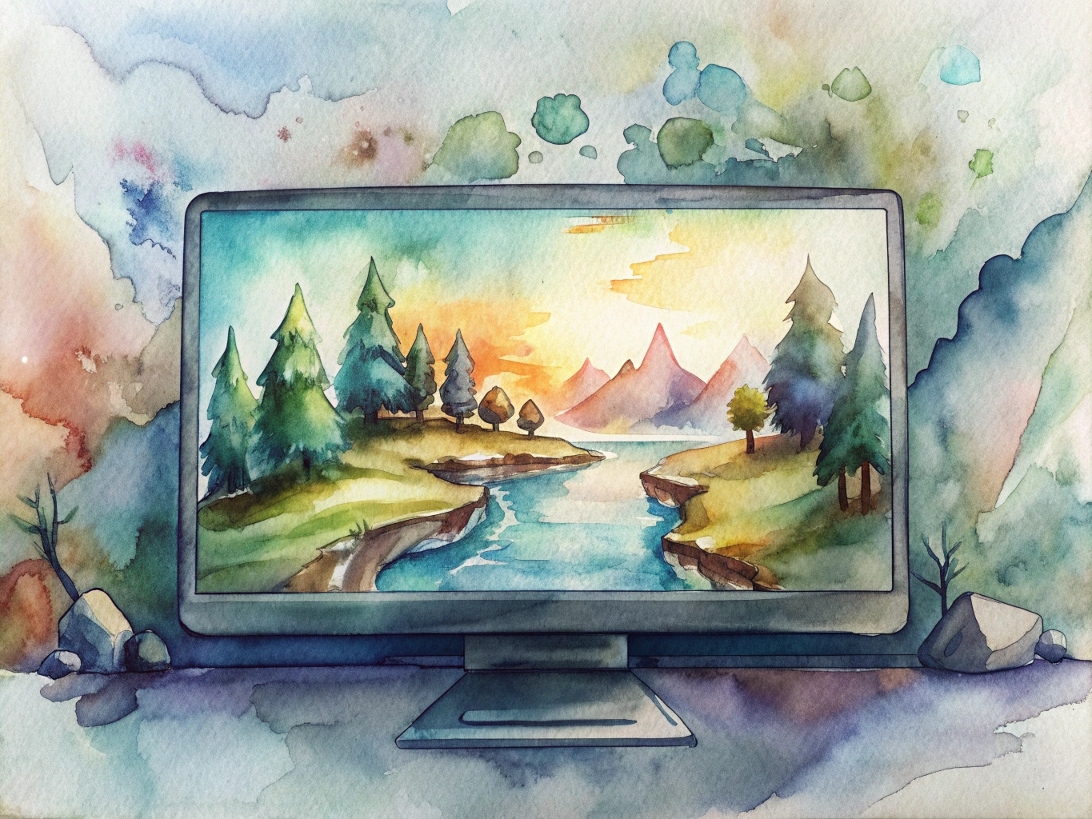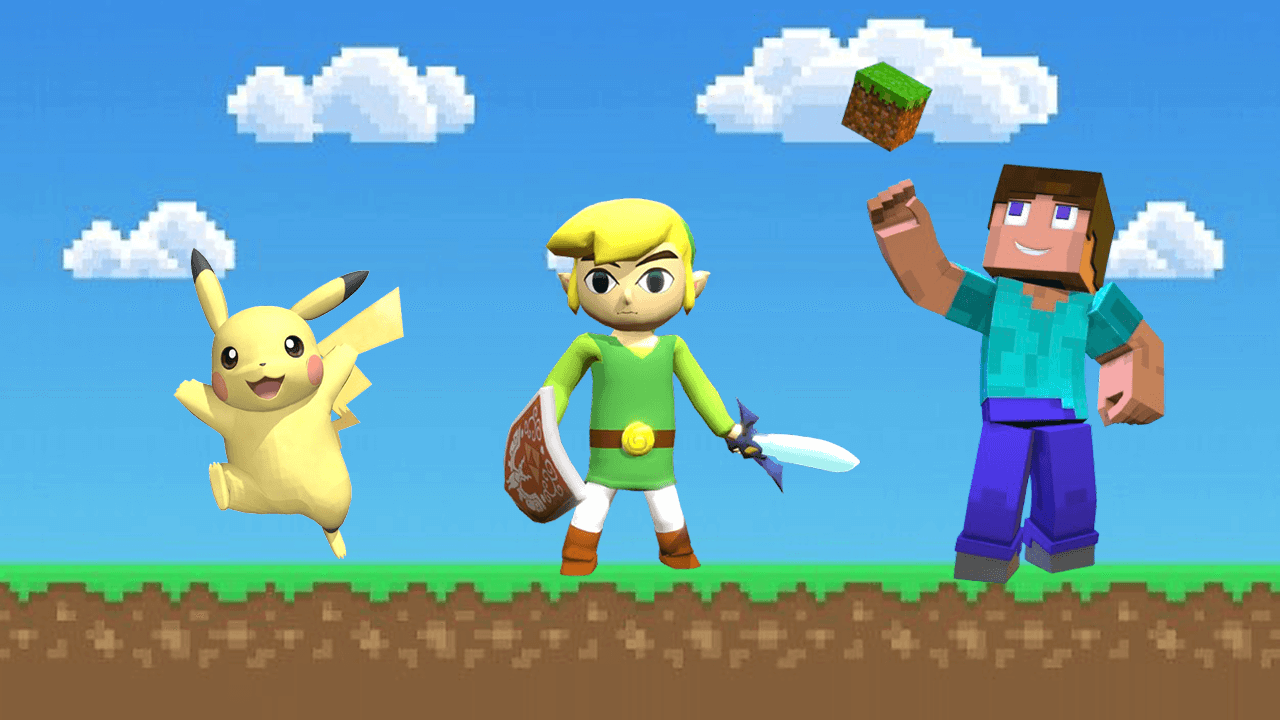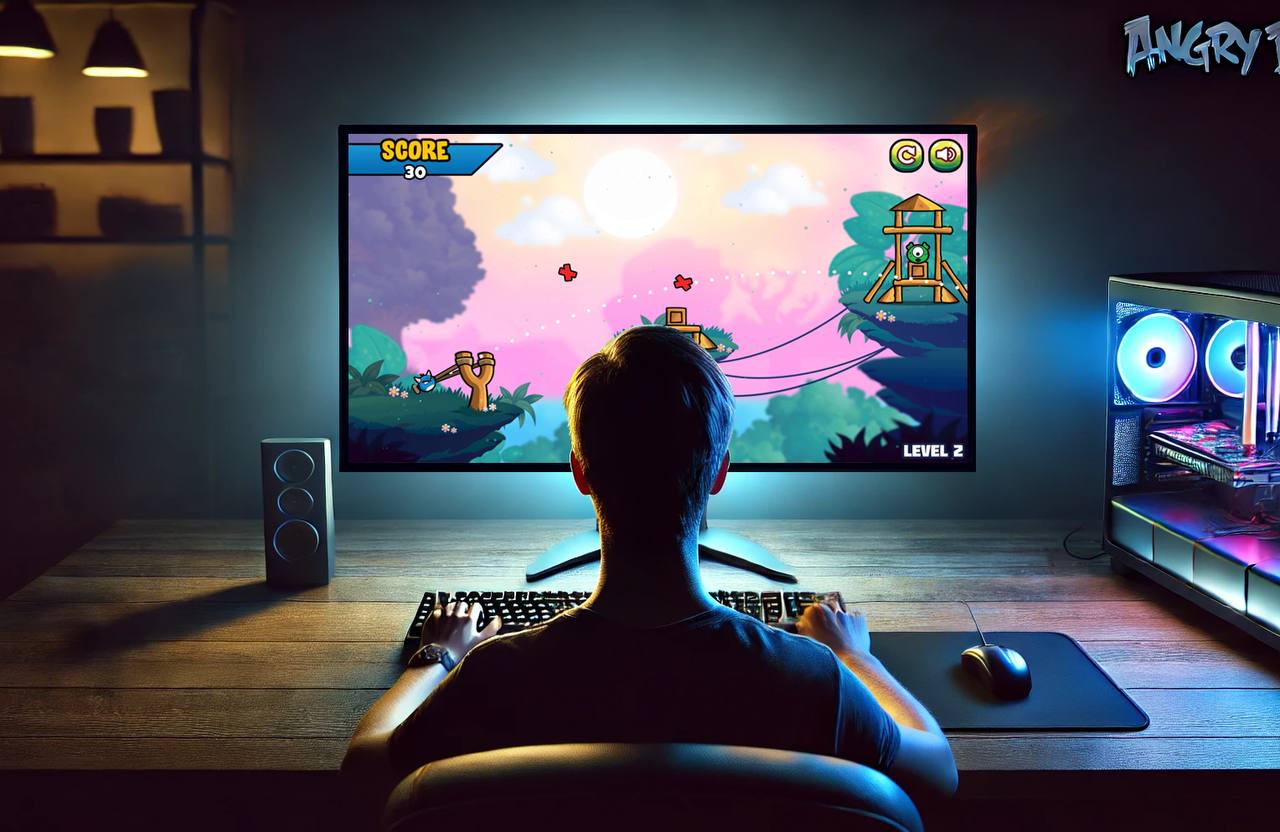Streaming has become a popular way for gamers to share their gameplay with others and build a community around their passion for gaming. Whether you’re an aspiring professional gamer or simply enjoy playing games and want to share your experiences with others, starting your own gaming channel can be an exciting and rewarding journey.
What is Game Streaming?
Game streaming refers to the act of broadcasting live gameplay on the internet for others to watch in real-time. It has gained massive popularity in recent years, thanks to the rise of platforms like Twitch and YouTube Gaming. The streaming community is constantly growing, with millions of viewers tuning in to watch their favorite streamers play a wide variety of games.
Streaming allows gamers to share their gaming experiences with a global audience. It offers a unique opportunity to connect with fellow gamers, build a community, and even turn gaming into a full-time career. And it’s not just for gaming anymore. For example, music channels get around 35,000 average monthly viewers. However, starting your own gaming channel can be a daunting task if you’re unsure where to begin. That’s where this guide on streaming 101 comes in handy.
Choosing Your Platform
The first step to starting your own gaming channel is choosing the right streaming platform. There are several popular options to consider, including Twitch, YouTube Gaming, and Mixer. It’s important to research and understand the features and community of each platform before making a decision. Take into account factors such as audience size, ease of use, and monetization options.
Twitch
Twitch is currently the leading platform for game streaming, with a vast user base and a dedicated gaming community. At any given moment, Twitch typically has around 2.5 million active viewers. In the third quarter of 2022 alone, viewers watched 5.71 billion hours of live streamed content on Twitch. YouTube Gaming, on the other hand, offers the advantage of being integrated with the larger YouTube platform, allowing for greater visibility and discoverability. Mixer, although smaller in comparison, offers unique features such as FTL (faster-than-light) streaming and interactive elements like “MixPlay” that can enhance viewer engagement.
When choosing your platform, consider your goals and target audience. Twitch is known for its emphasis on live streaming and its dedicated gaming community. It offers features such as chat interaction, channel subscriptions, and the ability to earn revenue through ads, subscriptions, and donations. If you want to connect with a large community of gamers and have a more interactive streaming experience, Twitch may be the platform for you.
YouTube
YouTube Gaming, on the other hand, benefits from being part of the larger YouTube platform. This provides creators with greater visibility and discoverability, as YouTube has a massive user base and search engine optimization. With YouTube Gaming, you can reach a wider audience, especially if you are interested in creating gaming-related content beyond live streaming, such as tutorials or reviews.
Mixer may be a smaller platform compared to Twitch and YouTube Gaming, but it offers unique features that can enhance viewer engagement. FTL streaming, for example, provides minimal delay between the streamer and viewers, creating a more interactive and real-time experience. Additionally, Mixer’s “MixPlay” feature allows streamers to incorporate interactive elements like polls, mini-games, and other widgets directly into their streams, increasing viewer participation.
Streaming Factors to Consider
It’s crucial to consider your own preferences, content goals, and the platform’s features and community when choosing the right platform for your gaming channel. Here are some factors to consider:
- Live Streaming vs. Video Uploads: Decide whether you want to focus on live streaming or uploading pre-recorded videos. Twitch is primarily known for its live streaming capabilities, while YouTube Gaming offers the option to both live stream and upload videos. Mixer also supports live streaming but has a smaller user base compared to the other platforms.
- Target Audience: Consider your target audience and where they are more likely to be found. Twitch has a dedicated gaming community, making it an ideal choice if you want to connect with gamers. YouTube, on the other hand, has a wider user base and offers the opportunity to reach a broader audience beyond just gamers.
- Monetization Options: Evaluate the monetization options available on each platform. Twitch allows streamers to earn revenue through ads, subscriptions, and donations. YouTube Gaming offers ad revenue, sponsorships, and the ability to earn money through YouTube’s Partner Program. Mixer also provides monetization options through subscriptions and an Embers system.
- Visibility and Discoverability: Consider the visibility and discoverability offered by each platform. YouTube has a powerful search engine optimization (SEO) advantage, making it easier for your content to be discovered by a larger audience. Twitch, on the other hand, has a strong community of gamers and a dedicated viewership for live streaming content. Mixer, although smaller, offers a more intimate and interactive experience with its FTL streaming and MixPlay features.
Setting Realistic Goals for Your Channel
When starting your own gaming channel, it’s important to set realistic goals that align with your personal aspirations and the nature of the platform you choose. Here are some key factors to consider when setting these goals:
- Define Your Purpose: Before you start streaming, ask yourself why you want to start a gaming channel. Are you doing it for fun, to connect with the gaming community, or with hopes of turning it into a career? Understanding your purpose will help you set appropriate and attainable goals.
- Content Focus: Determine the type of content you want to create and the niche you want to target. Are you interested in sharing gameplay highlights, providing game tutorials, or reviewing newly released games? By identifying your content focus, you can create a brand and attract a specific audience.
- Frequency and Consistency: Decide how often you will upload new content or go live. Consistency is key to building an audience, so set a realistic schedule that you can maintain. Whether it’s daily, weekly, or monthly, sticking to a consistent streaming schedule will keep your viewers engaged and coming back for more.
- Growth Milestones: Set achievable growth milestones to track your progress. This could include reaching a certain number of subscribers or followers, increasing average viewership, or earning a specific amount of revenue. Break down these milestones into smaller, actionable steps to make them more manageable.
- Engaging with Your Community: Interacting with your viewers and engaging with your community is vital for building a loyal and active viewer base. Take the time to respond to comments, engage in chat during your live streams, and create opportunities for your viewers to interact with you. This can be through Q&A sessions, polls, or even multiplayer games where you play with your viewers.
Choosing the Right Equipment
Gaming Consoles vs. PC: Decide whether you want to stream games from a gaming console or a PC. Each option has its pros and cons. Gaming consoles are generally more user-friendly and require less technical knowledge, while PCs offer more flexibility and customization options. Consider your budget, preferred game selection, and your comfort level with hardware and software setup before making a decision.
Budget: Determine how much you are willing to spend on your equipment. Keep in mind that streaming can be an investment, so it’s important to allocate a reasonable budget. Consider the cost of purchasing or upgrading your gaming console or PC, as well as any additional accessories, such as a microphone, webcam, or capture card.
Game Selection: Consider the types of games you want to play on your channel. Are they only available on a specific console or PC? Research the game libraries for different platforms and choose the one that aligns with your content goals and interests. Playing popular games can also attract a larger audience, so take that into consideration when making your decision.
Technical Knowledge: Assess your level of technical expertise. If you are comfortable with troubleshooting software issues and configuring hardware, then streaming on a PC might be a good fit. However, if you prefer a more user-friendly experience, gaming consoles offer a simpler setup process.
Streaming Features: Research the streaming features and capabilities of different platforms. Some consoles, like the PlayStation 5 and Xbox Series X, have built-in streaming capabilities that make it easy to start streaming without additional equipment. On the other hand, streaming on a PC gives you access to a wide variety of streaming software and customization options. Research and compare the features of different platforms to determine which one suits your needs best.
A Powerful PC
A powerful PC can offer you the flexibility and performance needed to create a high-quality streaming experience for your viewers. Here are some considerations when building or purchasing a PC for streaming:
- Processor: The processor, also known as the CPU, is one of the most important components for streaming. Look for a processor with multiple cores and a high clock speed to handle the demands of both gaming and streaming simultaneously. Popular choices for streaming include Intel Core i5 or i7 and AMD Ryzen processors.
- Graphics Card: Your graphics card, or GPU, is responsible for rendering the visuals in your games. A powerful graphics card is essential for smooth gameplay and streaming. Look for a card that can handle the graphics demands of the games you plan to play and stream. NVIDIA GeForce and AMD Radeon are popular choices for streaming.
- RAM: Random Access Memory, or RAM, is crucial for multitasking while streaming. The more RAM you have, the smoother your stream will be. Aim for at least 8GB of RAM, but consider upgrading to 16GB or more if your budget allows.
- Storage: When it comes to storage, you have two main options: HDD (hard disk drive) or SSD (solid-state drive). HDDs offer more storage space at a lower cost, while SSDs provide faster loading times and better overall performance. Consider using an SSD for your operating system and frequently played games, and an HDD for storing larger files.
- Internet Connection: A stable and fast internet connection is vital for streaming. Look for an internet service provider that offers a high upload speed, as this will determine the quality of your stream. Aim for a minimum upload speed of at least 5 Mbps, but higher speeds are recommended for better streaming quality. Fiber-optic connections are ideal, as they provide stable and fast internet speeds, reducing the risk of lag or interruptions during your streams.
Capture Card: If you plan on streaming console games, consider investing in a capture card. This hardware device allows you to capture and record your gameplay from consoles onto your PC for streaming. Capture cards come in various types, such as internal and external, with the latter being easier to set up. Popular options include Elgato HD60 S and AVerMedia Live Gamer Portable.
A High-Quality Graphics Card
Remember to regularly update your PC’s graphics card to ensure smooth and optimal performance for your gaming channel. As technology advances, new games and applications may require more graphics processing power. By keeping your graphics card up to date, you’ll be able to handle the latest games and deliver high-quality visuals to your viewers.
To update your graphics card, you should first identify the make and model of your current graphics card. This information can usually be found by right-clicking on your desktop and selecting “Display Settings” or “Graphics Options.” From there, navigate to the “Advanced Settings” or “Adapter” tab, and you should see the details of your graphics card.
Once you have identified your graphics card, you can visit the manufacturer’s website to check for any available updates. Most graphics card manufacturers provide regular driver updates that optimize performance, fix bugs, and add new features. These updates are essential for ensuring compatibility with the latest games and software.
To download and install the latest graphics card driver, follow the instructions provided by the manufacturer. Typically, you can find a “Support” or “Drivers” section on the manufacturer’s website. Search for your specific graphics card model and operating system, and you should be able to find the latest driver version.
A Reliable CPU
A reliable CPU (Central Processing Unit) is crucial for streaming your gaming channel. It is responsible for processing all the data and calculations needed to run your games and stream them simultaneously. Without a powerful CPU, your streaming quality may suffer and viewers may experience lag or buffering issues.
When it comes to choosing a CPU for your gaming channel, you need to consider both the speed and the number of cores. The speed of a CPU is measured in gigahertz (GHz), and generally, the higher the speed, the better the performance. Look for CPUs with higher clock speeds, such as Intel i7 or AMD Ryzen 7, to ensure smooth gameplay and streaming.
In addition to speed, the number of cores is also important. Cores are like individual processors within a CPU that can handle multiple tasks simultaneously. The more cores your CPU has, the more efficiently it can handle multitasking, which is essential when streaming your gaming sessions.
When selecting a CPU, make sure it is compatible with your motherboard. Check the socket type and chipset supported by your motherboard, and choose a CPU that fits these specifications. It’s also a good idea to read reviews and compare different CPUs to find one that provides the best value for your budget.
Once you’ve chosen a CPU, you’ll need to install it into your motherboard. Follow the instructions provided by the manufacturer and ensure that you apply thermal paste to the CPU to prevent overheating. Make sure to connect the CPU cooling fan or heatsink properly to keep your CPU temperature in check during your gaming sessions.
A Good Microphone
A good microphone is essential for running a successful gaming channel as it allows your viewers to hear your commentary clearly. When choosing a microphone, there are a few factors to consider:
- Noise-Canceling Features: Ensure that the microphone captures your voice accurately without picking up unwanted background noise. Look for microphones with good noise-canceling or noise-reduction features to minimize any distractions during your streams.
- Pickup Pattern: Consider whether you want a microphone with a cardioid pickup pattern, which focuses on capturing sound from the front and reducing sound from the sides and rear. This type of microphone can help isolate your voice and minimize any interference from keyboard or mouse clicks.
- Frequency Response: Pay attention to the microphone’s frequency response. This refers to the range of frequencies the microphone can pick up. For gaming channels, it’s important to have a microphone that captures a wide range of frequencies to accurately reproduce the different tones and nuances in your voice. Look for microphones with a frequency response range of at least 20Hz to 20kHz for clear and natural-sounding audio.
- Connection Type: Consider the type of connection your microphone requires. USB microphones are a popular choice because they are easy to set up and use. These microphones simply plug into your computer’s USB port and are ready to go. However, if you’re looking for higher audio quality or plan to use an XLR microphone, make sure you have an audio interface or mixer to connect it.
A Camera for Facecam
Including a facecam in your streams can enhance the viewing experience by adding a personal touch and allowing viewers to connect with you on a more personal level. When selecting a camera for your facecam, consider the following:
- Resolution: Aim for a camera with at least 1080p resolution for clear and sharp video quality. Higher resolutions, such as 4K, can offer even better quality, but ensure your internet connection can handle the bandwidth required for streaming at such high resolutions.
- Frame Rate: Look for a camera that supports a frame rate of at least 30fps for smooth video. For more fluid motion, especially during fast-paced games, a camera with 60fps is ideal.
- Field of View (FOV): Consider the field of view of the camera. A wider FOV can capture more of your surroundings, but make sure it doesn’t distort the image. A field of view between 60-90 degrees is usually sufficient for gaming streams.
- Lighting: Good lighting is crucial for a professional-looking facecam. Consider investing in softbox lights or ring lights to illuminate your face evenly and reduce shadows.
Selecting a Game Streaming Service
When selecting a game streaming service, you need to consider your goals, the features you want, and the platform’s community. Twitch, YouTube Gaming, and Mixer each offer unique features and communities:
- Twitch: Known for its strong gaming community and extensive live streaming features. It’s ideal for real-time interactions with viewers.
- YouTube Gaming: Benefits from integration with the larger YouTube platform, offering excellent discoverability and the ability to upload videos and live stream.
- Mixer: Offers unique features like FTL streaming and MixPlay, enhancing interaction and viewer engagement.
Deciding Whether to Use OBS or Another Streaming Software
OBS (Open Broadcaster Software) is a popular choice for game streaming due to its flexibility and robust feature set. It supports multiple platforms, custom overlays, and various sources like images, videos, and text. However, other streaming software options include:
- Streamlabs OBS: A user-friendly version of OBS with built-in widgets, alerts, and a streamlined interface.
- XSplit: Known for its ease of use and powerful features, XSplit is suitable for both beginners and advanced streamers.
- Wirecast: Offers professional-grade streaming features and is ideal for those who want high production value.
Optional Extras to Enhance Your Streaming Experience
To take your streaming setup to the next level, consider the following optional extras:
- Capture Card: For streaming console games, a capture card is essential.
- Dual-Computer Setup: Use one PC for gaming and another for streaming to reduce the load on your gaming PC.
- Green Screen: A green screen can help you create professional-looking backgrounds and remove distractions from your stream.
Engaging with Your Audience
Building a strong relationship with your viewers is key to growing your channel. Engage with your audience through live chat, social media, and interactive content. Consider hosting Q&A sessions, playing multiplayer games with your viewers, or running polls and giveaways to keep your community active and involved.
Growing Your Following
Growing your following takes time and consistency. Here are some tips to help you attract and retain viewers:
- Consistent Schedule: Stream regularly at times that suit your audience. Consistency helps viewers know when to tune in.
- Quality Content: Focus on creating high-quality content that showcases your personality and gaming skills.
- Networking: Collaborate with other streamers, participate in gaming communities, and engage with your audience on social media.
- Promotion: Use social media, forums, and gaming communities to promote your stream. Consider running ads or participating in gaming events to increase your visibility.
Monetizing Your Streams
Monetizing your streams is an essential aspect of running a successful gaming channel. While it’s important to first focus on building a strong following and creating engaging content, monetization can help turn your passion for gaming into a sustainable source of income. Here are some key strategies to consider when looking to monetize your gaming channel:
- Subscriptions: Platforms like Twitch and YouTube Gaming offer subscription options where viewers can support you financially. Offer perks such as emotes, badges, and exclusive content to attract subscribers.
- Donations: Use services like PayPal, Streamlabs, or Patreon to accept donations from your viewers. Make sure to thank your donors and acknowledge their support during your streams.
- Sponsorships: Partner with gaming brands or companies that align with your content. Sponsorships can provide financial support and product deals, enhancing your channel’s growth.
- Affiliate Marketing: Promote products or services through affiliate links. Earn a commission on sales generated through your links. Consider joining affiliate programs from gaming gear brands, game stores, or streaming software providers.
- Ads: Enable ad monetization on YouTube Gaming and Twitch. Make sure to balance ad placement to avoid disrupting the viewer experience.
Conclusion
Starting your own gaming channel can be a fulfilling and exciting journey. With the right equipment, a solid plan, and a passion for gaming, you can build a community and share your gaming experiences with the world. Remember, consistency, engagement, and quality content are key to success in the streaming world. So, gear up, hit that “Go Live” button, and start your adventure in the world of game streaming! Happy streaming!



